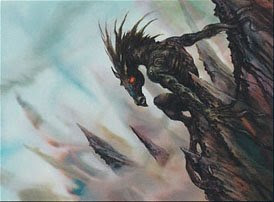Abaddon
Deity
Still interested. 




 Magical races or peoples usually don't depend on money. That's what I saw as a problem withing your current rule brainstorming.
Magical races or peoples usually don't depend on money. That's what I saw as a problem withing your current rule brainstorming.





 ). Also note that the exact benefits of these broad categories will differ from religion to religion depending upon their descriptions. No two religions are wholly alike!
). Also note that the exact benefits of these broad categories will differ from religion to religion depending upon their descriptions. No two religions are wholly alike!
Nutranurse said:Societal Focus is the next part of the government type and represents just what social class possess the most power in the realm. The focus can either be Noble, Ecclesiastic, or Popular to represent the traditional divide of Nobility/Priests/Everyone Else. Note that these divides are just stock divides and are further modified by whatever fluff the player creates. In fact, I encourage players to think outside of the box and alter castes to fit their own visions. Doing this will result in new societal focuses being created.
Noble focused realms are ruled by elite members of society whose status is determined solely by blood. As a result land tends to pass down through families and the realm tends to be stabler than others, resulting in a stability bonus for the player. However, should civil unrest occur expect it to be very dire. Noble focused realms also earn a small bonus to their AP to represent the vast swaths of land the nobility have lesser-born people farm so they (the nobility) can eat, drink, and be merry. VIPs in noble focused realms also tend to be nobles (surprise!), which sees them having a higher likelihood for combat-oriented traits, though they also run higher risks for health defects. Noble focused realms tend to produce armies with a visible difference in quality. The high-class troops tend to have equally high quality, while the low-class troops tend to be cannon fodder.
Ecclesiastic focused realms are ruled by priesthoods (whether this is a council of priests or local priests is determined by the centralization/decentralization/nomadic factor) who can stir up the whole realm with a single holy word. As a result these realms tend to be very unified in cause should everyone be of the same religion and face an external religious threat, resulting in a small stability boost. However, these realms also tend to be very oppressive (regardless of the religion) and incur a penalty to weariness score, having a lower limit than normal. The success of an Ecclesiastic realm depends greatly upon the success of its religion (and the tenets of the religion), including the religion's global/local unity and strength. Players can expect high times when the people think heaven is on their side and can expect a very sadistic moderator in the opposite situation. Armies fielded by Ecclesiastic realms vary in quality and discipline, but have remarkably high morale to represent the religions zeal propelling the people to war. VIPs in Ecclesiastic realms either come from the established priesthood (which can see a variety of traits evolve as these are the individuals who can risk being worldly) or from the ranks of utter zealots.
Popular realms are not exactly ruled by the 'people'. They are ruled by whatever 'other' class the player has empowered, be they merchants, scholars, or farmers. Regardless, Popular realms see boosts in both AP and GP to represent the focus being on those individuals who produce AP and GP. These realms see a small penalty to their stability and weariness scores to represent the downfalls to giving the larger classes a larger say in politics. Furthermore the VIPs of Popular realms are the most varied set of people on the planet and this tends to result in many interesting inter-factional situations. Armies fielded by Popular realms have no real 'type', but they do tend to be larger than normal when mustered.





